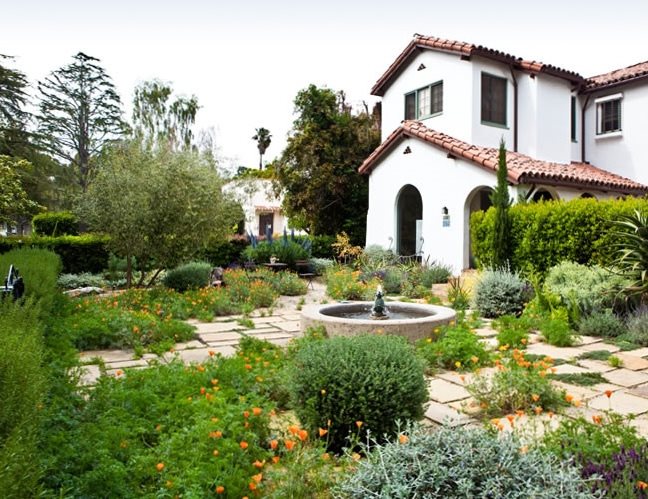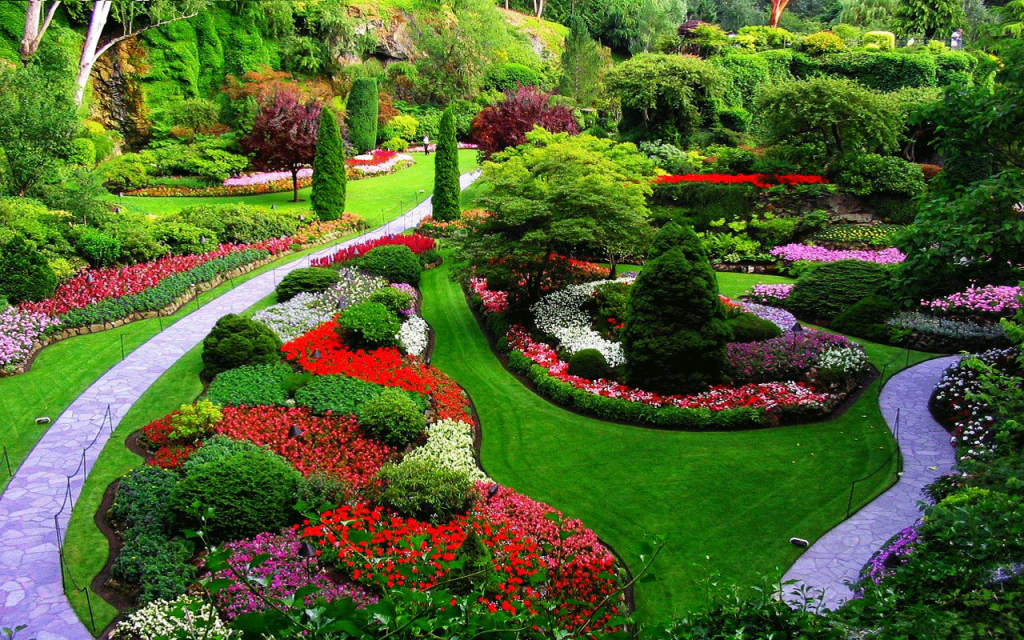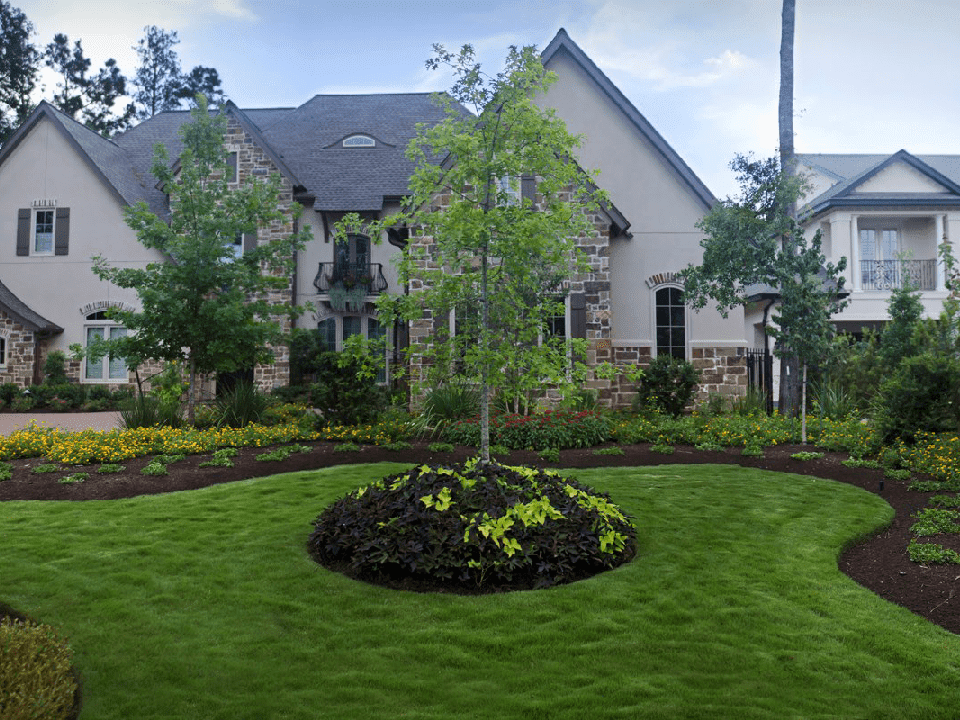What Does Hilton Head Landscapes Do?
What Does Hilton Head Landscapes Do?
Blog Article
An Unbiased View of Hilton Head Landscapes
Table of ContentsGet This Report on Hilton Head LandscapesFacts About Hilton Head Landscapes UncoveredTop Guidelines Of Hilton Head LandscapesOur Hilton Head Landscapes StatementsHow Hilton Head Landscapes can Save You Time, Stress, and Money.The Hilton Head Landscapes StatementsThe Facts About Hilton Head Landscapes UncoveredHilton Head Landscapes - Truths
Form compatibility is additionally a significant part of unity in designone or 2 noticeably various types benefit comparison and emphasis, but typically all other forms ought to have some similarities for a combined look. Texture describes just how crude or great the surface of the plant or hardscape material really feels and/or looks.
Examples of plants with crude structure include philodendrons, agaves, bromeliads, hollies, hands, and hydrangeas. Qualities that develop great structure consist of little vegetation; thin, strappy fallen leaves (turfs) or high, thin stems; little, dense branches and small branches; long stems (creeping plants); and small, delicate blossoms.
Getting The Hilton Head Landscapes To Work
Most plants are average texture, in that they can not be described as having either coarse or fine appearance. Medium-textured plants act as a background to link and combine the crude- and fine-textured plants.

To make an area really feel smaller, put the crude textures along the outer perimeter and the fine textures closest to the audience. The detail of the rugged structure makes the plants appear closer and makes the area really feel smaller. The regarded appearance of plants can additionally transform with the distance from the plant.
Our Hilton Head Landscapes Ideas
Strong colors raise the contrast and make the texture show up coarser, while soft colors can flatten structure. Hardscape with a rugged texturesuch as very rough rocks and bold, big timberstends to make all plant material show up extra average textured. Developers commonly establish a texture research (Figure 8) on paper to assist make a decision the plan of plant products.
Color in plant product and hardscape adds passion and variety to the landscape. Shade is the most conspicuous component in the landscape and is normally the focus of a lot of homeowners; nevertheless, it is also the most short-term aspect, normally lasting only a few weeks a year for individual plants.
Hilton Head Landscapes Fundamentals Explained
A basic summary of the color wheel includes the 3 primaries of red, blue, and yellow; the 3 second shades (a mix of two primaries) of eco-friendly, orange, and violet; and 6 tertiary shades (a mix of one adjacent key and secondary shade), such as red-orange. Color theory clarifies the connection of colors per other and exactly how they ought to be made use of in a make-up.

Comparable (sometimes called unified) color pattern are any three to five colors that are nearby on the color wheel, such as red, red-orange, orange, yellow-orange, and yellow, or blue, blue-violet, and violet (hilton head landscapers). The colors are related per various other due to the fact that they typically consist of 2 main shades mixed to create a secondary and two tertiary shades, which implies they share common residential or commercial properties
They often tend to have high comparison between them. The most usual collections are violet and yellow, red and environment-friendly, and blue and orange. Complementary colors are frequently discovered naturally in flowers; a common set is yellow and violet. Color is located in the blossoms, foliage, bark, and fruit of plants.
Hilton Head Landscapes Things To Know Before You Get This
Environment-friendly foliage in all its various tones is the dominant shade by quantity, yet other shades capture focus a lot more readily due to the fact that of their high contrast to the shade green. Shade is also discovered in buildings, rocks, pavers, wood, and furniture. Many colors in natural products, such as stone and wood, are usually low-key and have a tendency to be variants of brown, tan, and light yellow.
Colors have properties that can impact feelings, spatial understanding, light high quality, equilibrium, and emphasis. Amazing colors tend to be calming and should be used in locations for leisure and peacefulness.
How Hilton Head Landscapes can Save You Time, Stress, and Money.
The "temperature level" of shades can likewise affect the assumption of range. Amazing colors often tend to recede and are perceived as being further away, making an area really feel larger. Warm shades often tend to breakthrough and are perceived as being more detailed, making an area feel smaller. Shade can likewise be utilized to capture attention and straight sights.
Bright yellow, which has the greatest strength, also has a high comparison with all various other colors (commonly described as a "pop" of color) and need to be used moderately. A small quantity of extreme shade has as much visual weight as a large amount of an extra suppressed or weaker color.
Analogous (occasionally called harmonious) color systems are any three to five colors that are surrounding on the the original source color wheel, such as red, red-orange, orange, yellow-orange, and yellow, or blue, blue-violet, and violet. The colors are relevant per other due to the fact that they generally consist of 2 main shades blended to create a secondary and 2 tertiary shades, which suggests they share common properties.
The 4-Minute Rule for Hilton Head Landscapes
They have a tendency to have high contrast between them. The most usual collections are violet and yellow, red and environment-friendly, and blue and orange. Corresponding colors are typically discovered naturally in blossoms; a typical pair is yellow and violet. Color is located in the blossoms, foliage, bark, and fruit of plants.
Green vegetation in all its various tones is the dominant shade by quantity, but other colors catch interest much more readily because of their high comparison to the color environment-friendly - landscapers hilton head island - https://h1tnhdlndscps.blog.ss-blog.jp/2024-07-03?1720010270. Shade is likewise found in structures, rocks, pavers, wood, and furniture. The majority of colors in all-natural products, such as rock and wood, are generally low-key and have a tendency to be variations of brownish, tan, and pale yellow
The Facts About Hilton Head Landscapes Uncovered
Shade is an essential element for creating passion and range in the landscape. Shades have homes that can influence emotions, spatial understanding, light top quality, equilibrium, and emphasis. One residential or commercial property of shade is defined about temperaturecolors appear to be great or cozy and can affect emotions or feelings. Great shades often tend to be calming and ought to be utilized in areas for leisure and tranquility.
The "temperature" of colors can also influence the understanding of range. Trendy shades often tend to decline and are viewed as being further away, making an area feel larger. Warm colors tend to advancement and are perceived as being closer, making a space really feel smaller sized. Shade can likewise be used to catch interest and direct views.
Brilliant yellow, which has the greatest strength, additionally has a high contrast with all other shades (typically defined as a "pop" of color) and should be utilized sparingly. A small quantity of intense shade has as much aesthetic weight as a big amount of a more controlled or weak color.
Report this page